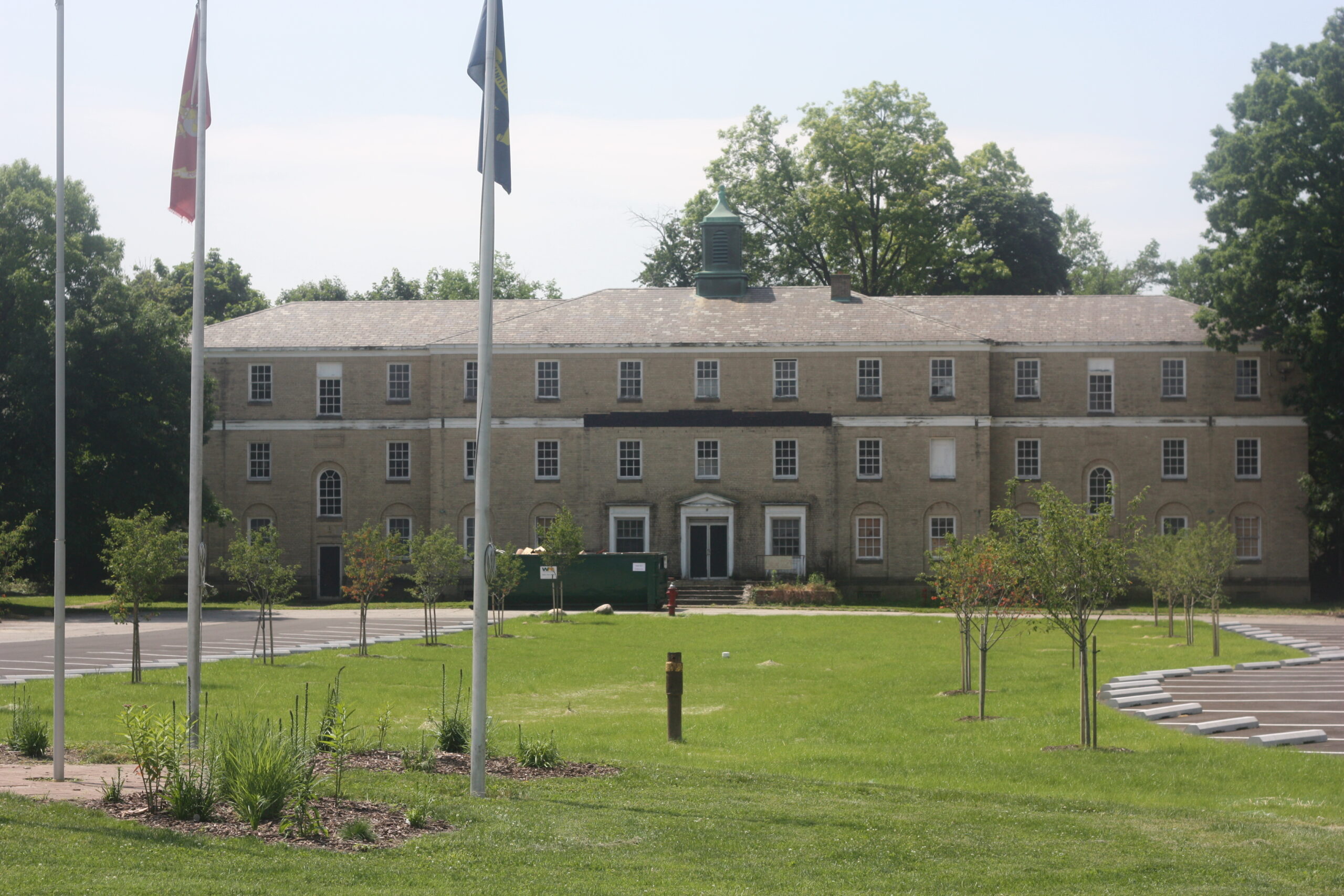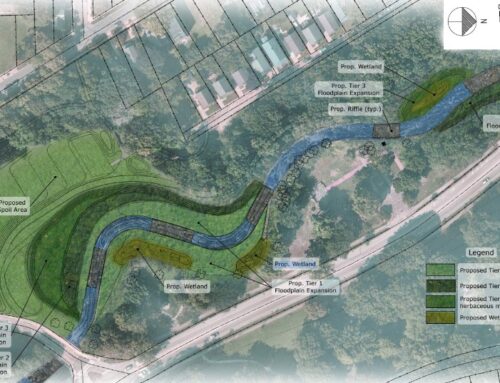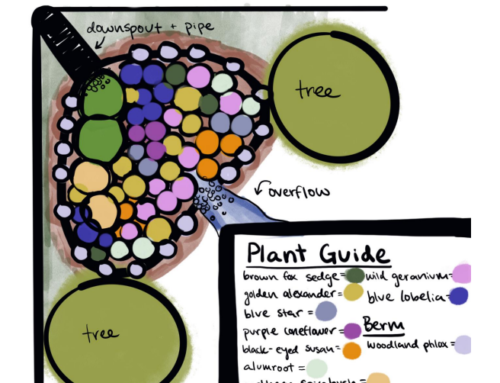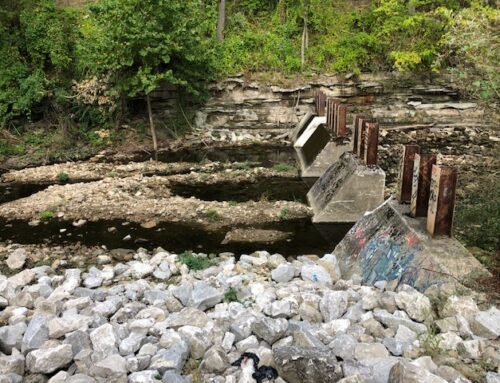[et_pb_section fb_built=”1″ _builder_version=”4.16″ global_colors_info=”{}”][et_pb_row _builder_version=”4.16″ global_colors_info=”{}”][et_pb_column type=”4_4″ _builder_version=”4.16″ global_colors_info=”{}”][et_pb_text _builder_version=”4.16″ global_colors_info=”{}”]
We had to look no further than our front door to find partners with an interest in restoring the watershed. Our office is located in the Fairhill Partners (Fairhill) building in the Larchmere neighborhood of Cleveland. Fairhill’s mission connects people to lifelong learning, intergenerational relationships and successful aging opportunities. Each month, more than 1,500 people visit our shared, ten acre campus, which was once a Merchant Marine hospital base for the Great Lakes. Fairhill’s leadership was receptive to our interest in collaborating on grant funded stormwater management on the campus, as it expanded existing sustainability efforts such as LEED Gold certified building rehabs and permaculture gardens.
With a grant for over $300,000 in hand from NEORSD, we hired AECOM to design a bioretention basin and F. Buddie Contracting to install it in the center of the parade ground. Like all bioretention basins, its purpose is to capture, slow, filter, and infiltrate peak flows. The 1.25 acre bio-retention basin will capture over twelve inches of stormwater a year, equivalent to almost half a million gallons annually.
On June 5, 2019, the site received 1.5” of rainfall, but experienced no issue draining down. NEORSD and our partners at Fairhill Partners were very happy with the swale’s function after this significant test from mother nature. The project provides benefits to Doan Brook by reducing combined sewer overflows to the brook and Lake Erie. The finishing touch to the basin was a colonnade of fruit trees encircling the parade ground to provide additional stormwater capture. The trees were an historic element of the military’s original design for the campus. DBWP raised funds from the William Bingham Foundation for the trees. A big thanks to our partners at Fairhill as well as technical advisors from NEORSD, Cuyahoga Soil and Water Conservation District, and the Ohio State University, and a big shout out as well to Hawken School volunteers who installed native pollinator plants around the bioretention basin.
[/et_pb_text][et_pb_image src=”https://doanbrookpartnership.org/wp-content/uploads/2020/04/2017-04-13-20.22.18.jpg” _builder_version=”4.16″ global_colors_info=”{}”][/et_pb_image][et_pb_image src=”https://doanbrookpartnership.org/wp-content/uploads/2020/04/IMG_1040.jpg” _builder_version=”4.16″ global_colors_info=”{}”][/et_pb_image][/et_pb_column][/et_pb_row][/et_pb_section]






Leave A Comment